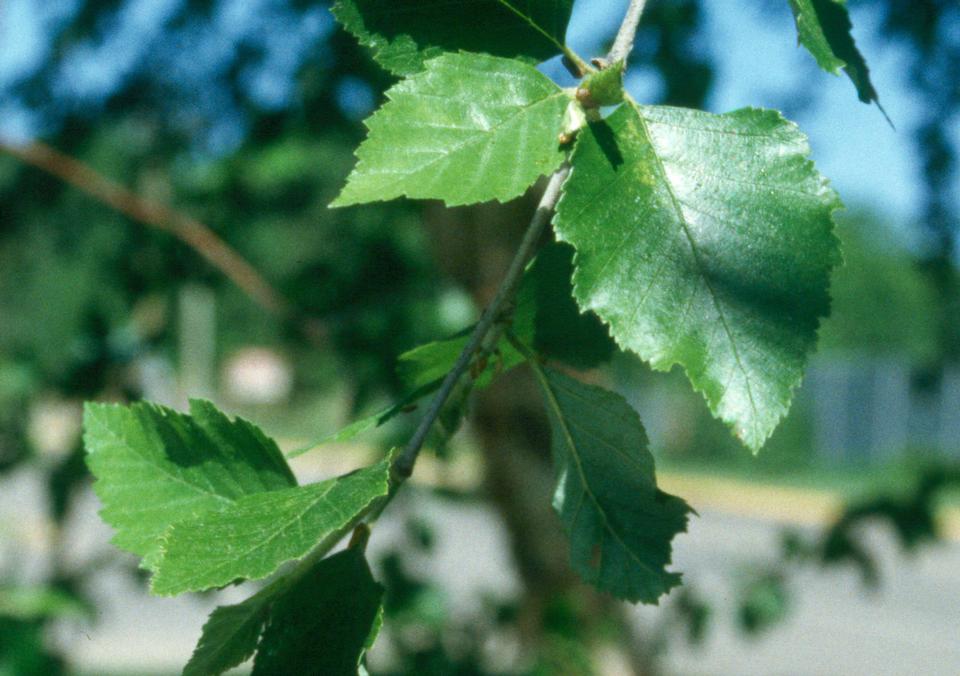Birch, River
Betula nigra
Betulaceae - Birch
Description
Leaves: Alternate; simple; 1-1/2" to 3-1/2" long; 3/4" to 2-1/2" wide; deciduous; rhombic-ovate; doubly serrate margin; wedge-shaped base; tapering sides; petiole short, hairy.
Twigs/buds: Twigs slender; red-brown; more or less hairy below. No terminal bud; lateral buds pointed.
Flowers/fruit: Monoecious. Fruit small winged nutlets arranged in a cone-like catkin; cylindrical; erect; hairy; with deciduous scales; matures in late spring.
Bark: Thin; salmon-pink to red-brown; papery.
Wood: Unimportant; see water birch for general description.
General: Native to eastern and southeastern U.S., not Utah. As with other birches, normally found along streams on cool, moist sites. Shade intolerant. Prefers abundant water, but may survive on drier sites.
Landscape Use: Possible alternative to European white birch, since it seems to have less problems with borers. However, suffers from iron chlorosis on high pH soils. I have seen several of these planted in marginal conditions in Ogden that were doing fairly well. Bark color and texture is beautiful. Trees often grown with two or three stems coming from the base. Zones 4-9.
Cultivars: 'City Slicker', 'Dura-Heat', 'Fox Valley', 'Graceful Arms', 'Heritage', 'Shiloh Splash', 'Summer Cascade', 'Suwanee,' 'Tecumseh Compact'.
Characteristics
General
| Family | Betulaceae - Birch |
|---|---|
| Cultivar Availability | Yes |
| Hardiness Zone | 4-9 |
| Type | Broadleaf |
| Utah Native | No |
Growth
| Growth Rate | High |
|---|---|
| Mature Height | High |
| Longevity | Medium |
| Is Good Under Power Lines | No |
| Crown Shapes | Oval |
Ornamental
| Bark | Yes |
|---|---|
| Fall Color | No |
| Flowers | No |
| Foliage | No |
| Fruit | No |
Tolerance
| Shade | Medium |
|---|---|
| Salt | Medium |
| Drought | Low |
| Poor Drainage | High |
| Alkalinity | Low |
| Transplanting | Medium |




